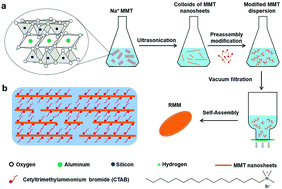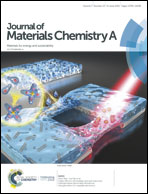Nanofluidic energy conversion and molecular separation through highly stable clay-based membranes†
Abstract
Energy collection and molecular separation are two emerging applications based on membrane technologies. It remains a challenge to improve the separation performance of molecular channels. Meanwhile, the application of membranes is typically impeded by their poor stability under practical hydrous conditions. Herein, we present the fabrication of a uniformly lamellar membrane using montmorillonite nanosheets as building blocks. We managed to achieve nanofluidic ion transport and molecular separation simultaneously. The membrane nanochannels possess nanofluidic ion transport properties with an output power density of up to 0.18 W m−1 at a membrane thickness of 11.2 μm under a 1000-fold transmembrane concentration difference. The membrane also shows a water permeance of 429 L m−2 h−1 atm−1 at a thickness of 2.5 μm and high separation efficiency for both cationic and anionic dyes. Moreover, the montmorillonite-based membranes can maintain high stability under aqueous conditions with soaking, shaking, and even ultrasonication.



 Please wait while we load your content...
Please wait while we load your content...